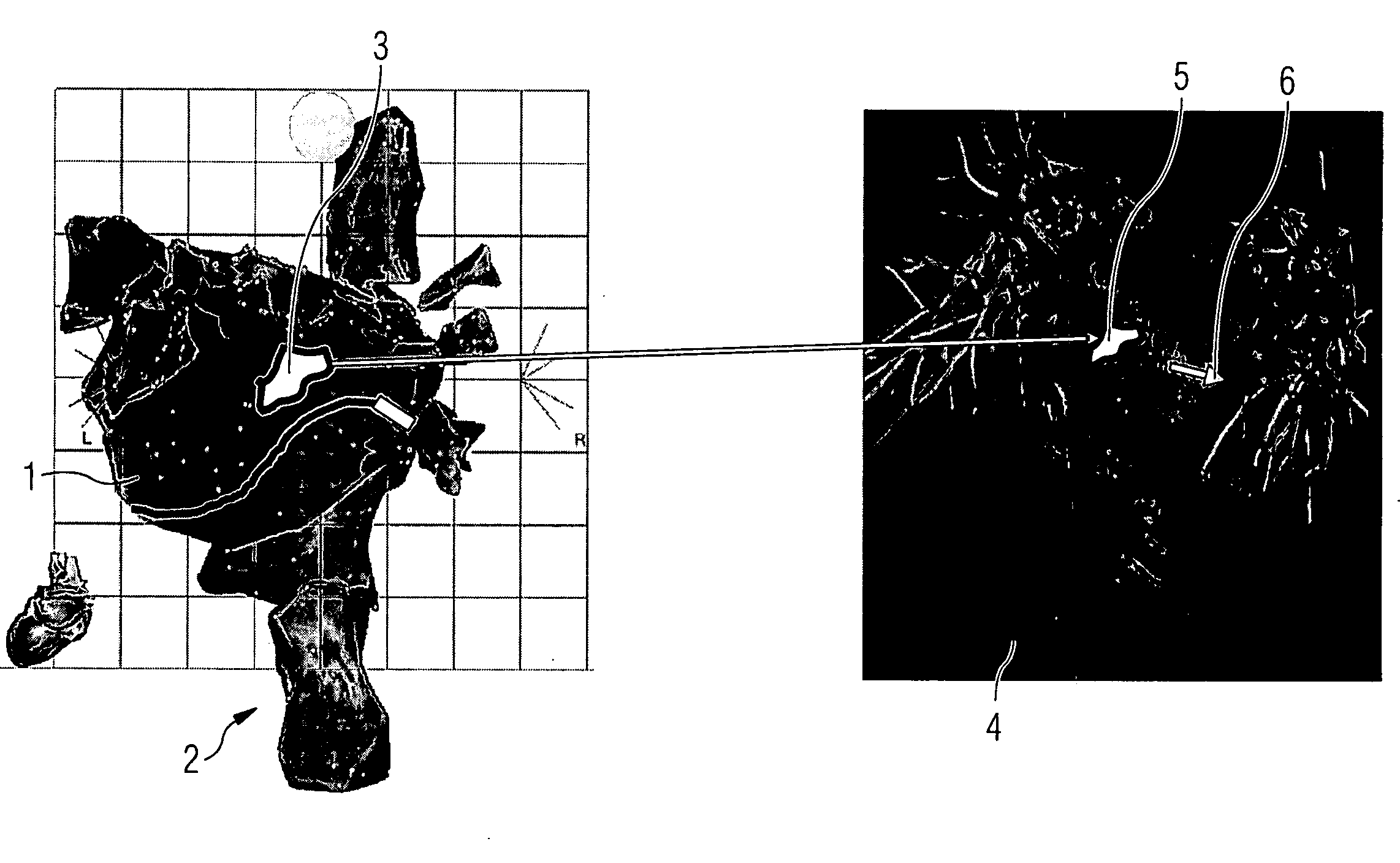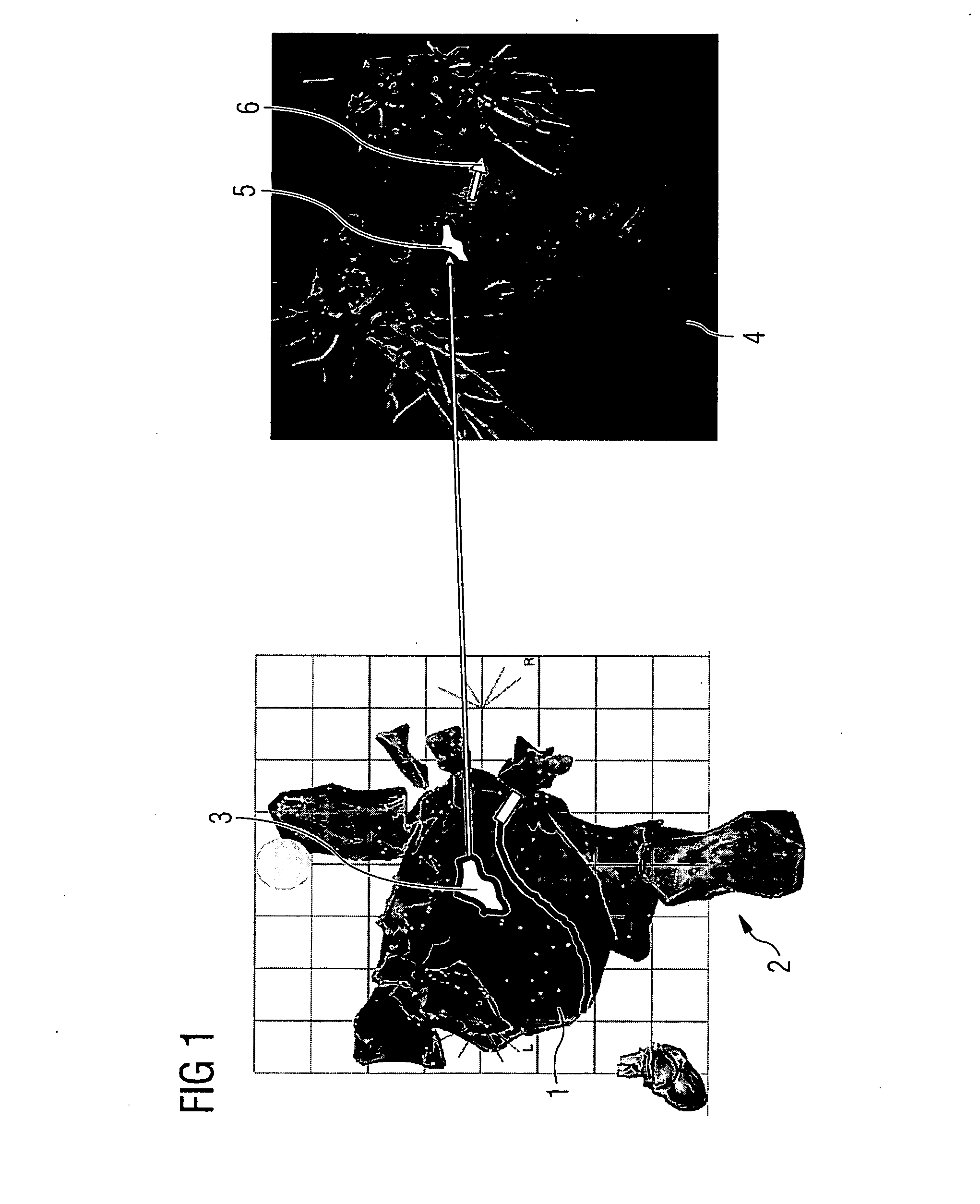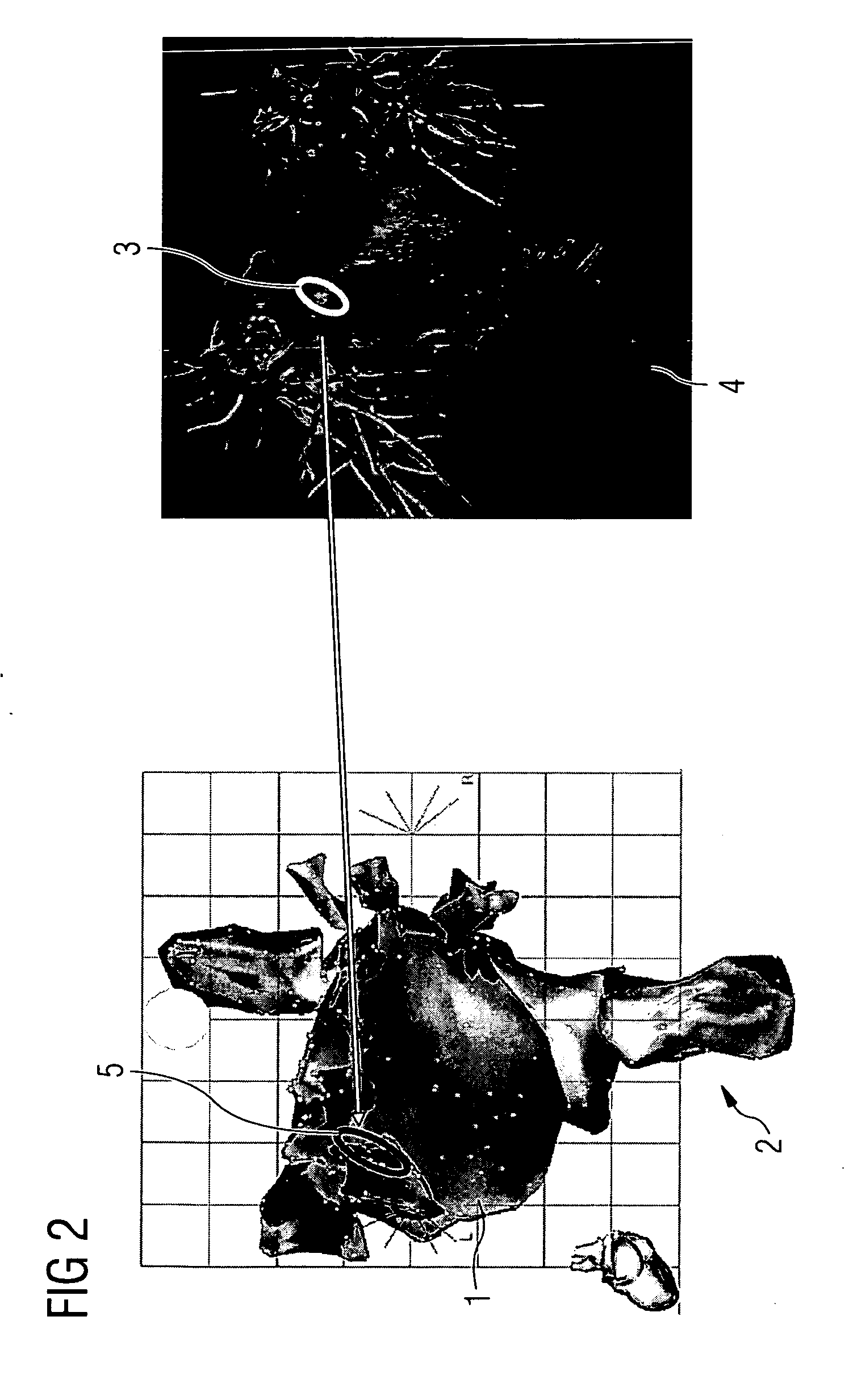Method and apparatus for visually supporting an electrophysiological catheter application in the heart by means of bidirectional information transfer
a catheter application and electrophysiological technology, applied in the field of electrophysiological catheter application visual support, to achieve the effect of rapid overview of position and exten
- Summary
- Abstract
- Description
- Claims
- Application Information
AI Technical Summary
Benefits of technology
Problems solved by technology
Method used
Image
Examples
Embodiment Construction
[0023]FIG. 1 shows an example of transferring the contour of an area 3 captured in the electroanatomical mapping data from the electroanatomical mapping system to the 3D visualization workstation on which a representation 4 of the 3D image data is displayed. During the electrophysiological procedure, an electroanatomical 3D map 2, as shown in the left-hand part of FIG. 1, is visualized on the electroanatomical 3D mapping system. This representation is based on a simplified model of the heart on which the individual 3D mapping data are visible as mapping points 1. In this representation the position and orientation of the mapping catheter 9, which can be derived from the 3D mapping data, is additionally superimposed. In this 3D mapping data, the position and contour of a three-dimensional area 3 is now captured which is visible in the left-hand part of the figure, this possibly being, for example, the outline of post-infarction scarring of the left ventricle which can be determined f...
PUM
 Login to View More
Login to View More Abstract
Description
Claims
Application Information
 Login to View More
Login to View More - R&D
- Intellectual Property
- Life Sciences
- Materials
- Tech Scout
- Unparalleled Data Quality
- Higher Quality Content
- 60% Fewer Hallucinations
Browse by: Latest US Patents, China's latest patents, Technical Efficacy Thesaurus, Application Domain, Technology Topic, Popular Technical Reports.
© 2025 PatSnap. All rights reserved.Legal|Privacy policy|Modern Slavery Act Transparency Statement|Sitemap|About US| Contact US: help@patsnap.com



